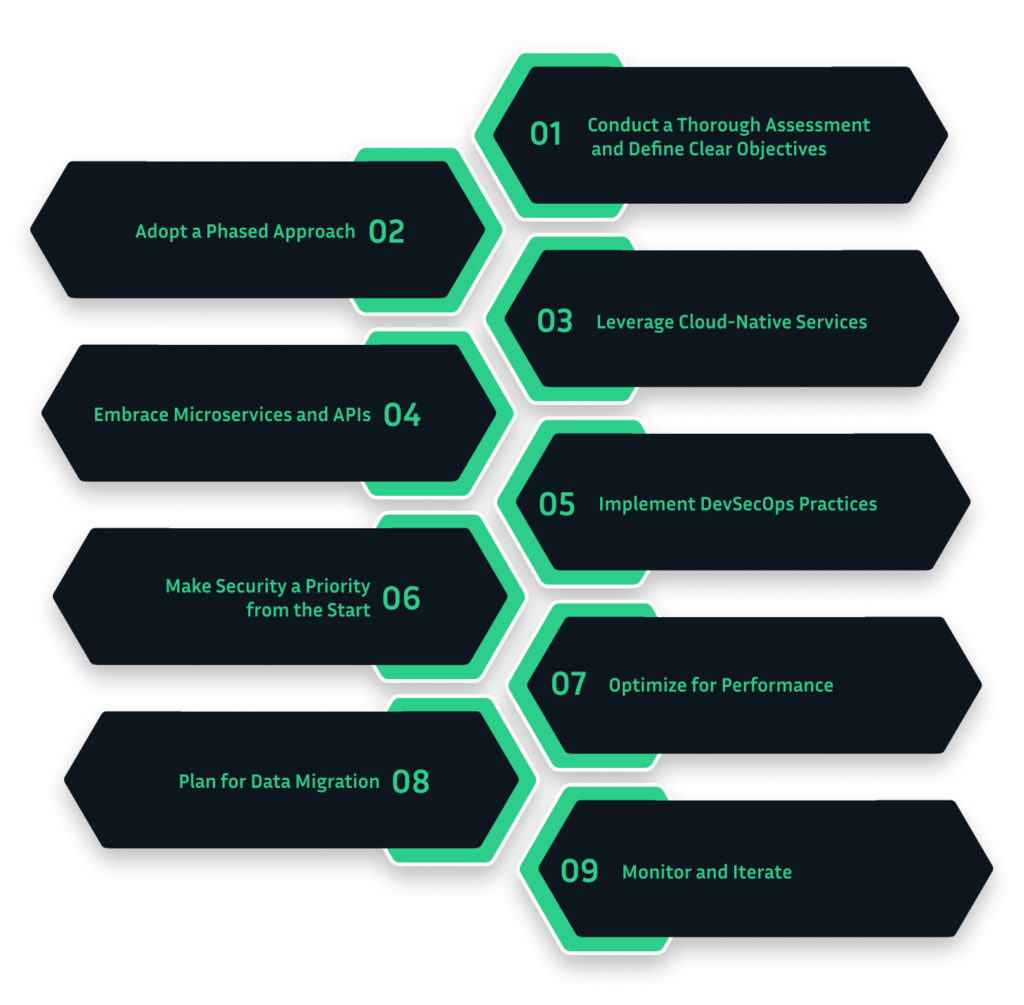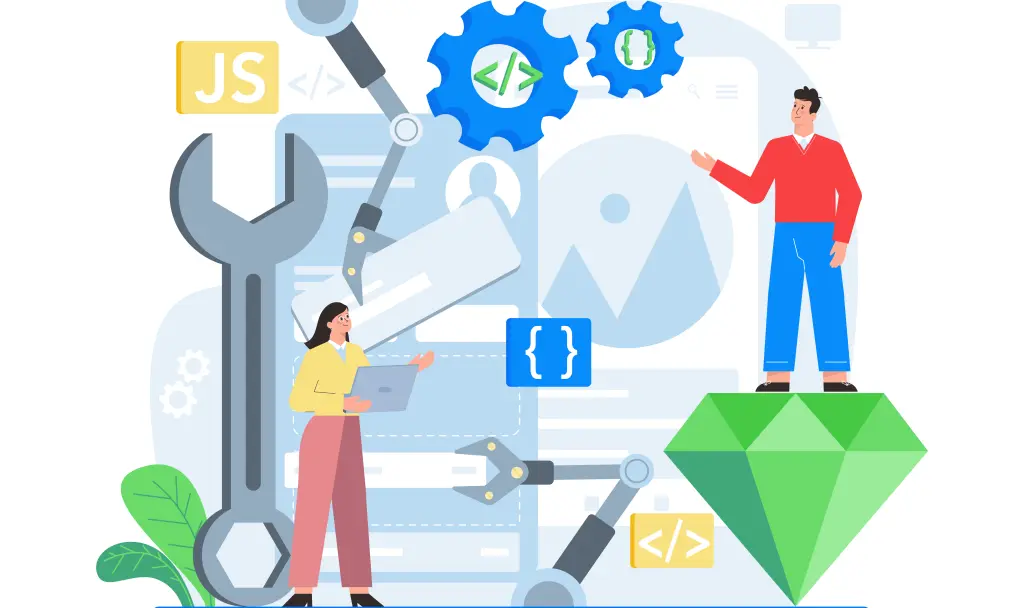Legacy systems might have served us well in the past, but let’s face it—they’re now more of a burden than a benefit as businesses are under constant pressure to innovate and adapt. Did you know that nearly 80% of IT budgets are spent on maintaining these legacy systems? Also, businesses must constantly deal with operational inefficiencies, regulatory compliance failures, inflexible infrastructure, inconsistent customer experience and limited scalability.
Which is why enterprises are turning to application modernization. Over 90% of enterprise customers confirm that they have at least one application modernization project currently active. In this blog, we’ll break down what application modernization really means, why it’s important, and how to go about it. Plus, we’ll explore the key elements of successful change and share some top tips for getting it right.
What is Application Modernization?
Application modernization is the process of updating and improving existing software to utilize new technologies, increase performance and meet current business needs. In addition to application modernization, a critical element of any organization’s long-term strategy should be the modernization of application development approach, also referred to as Developer Velocity.

Why? How? And How Much?
It is 2024, and enterprises really cannot afford legacy applications stuck with
- Poor CX due to underlying framework limitations,
- Lacking innovation, scalability, and agility available with modern infrastructure,
- Security not a core principle, but an afterthought,
- Ability to realize value through advanced Analytics and AI.
Key Technologies for Application Modernization
Here’s how some of the most crucial technologies can drive your modernization efforts:
- Cloud Services
Cloud services provide infrastructure, platforms, and software hosted by third-party providers, accessible over the internet from any device. These services facilitate the seamless flow of data between users and clients. Beyond enhancing agility and scalability, cloud services play a critical role in enhancing security, making them foundational to any modernization effort. - Microservices
Microservices architecture breaks down traditional monolithic applications into smaller services. Each service operates independently, allowing for separate development, testing, and deployment. This modular approach increases agility, supports continuous delivery, and enables organizations to respond swiftly to changing requirements. - Containerization
Containers package application components and their dependencies into a single, portable unit. This ensures that applications run consistently across different environments, simplifying the transition to cloud technologies and improving operational flexibility in complex environments. - Orchestration and Automation
Automation software reduces human intervention by setting instructions and frameworks for IT tasks, while orchestration manages and coordinates multiple automated tasks. These technologies streamline processes, minimize errors, and free up developers to focus on more strategic activities, significantly enhancing operational efficiency.
By adopting these technologies, organizations can transform their legacy systems into robust, scalable, and secure solutions.
Pillars of Change
For a successful application modernization journey, organizations need to take a comprehensive approach and carefully evaluate their readiness for transformation. This involves tackling key challenges across three critical areas: people, processes, and technology.
People
- Resistance to Change: Teams used to old ways of doing things might push back against new methods and tools. Overcoming this means supporting your team through training and demonstrating the benefits of new practices.
- Skills Gap: Many organizations lack expertise in modern development frameworks and cloud technologies. Filling this gap often means investing in upskilling, bringing in new talent with the right expertise or outsourcing to a trusted solution provider.
Process
- Legacy Integration: Integrating outdated systems with new applications can be intricate and challenging. Effective modernization demands careful planning and coordination to ensure smooth interoperability.
- DevSecOps Adoption: While DevSecOps can streamline development, testing and deployment, organizations with limited experience in this area may encounter delays. Gradual implementation and training can help ease the transition.
- Governance and Compliance: Ensuring compliance with governance frameworks can introduce delays in adopting modern application architectures. Balancing the two is a must to move forward effectively.
Technology
- Complexity of Existing Systems: Decoupling tightly integrated legacy components while maintaining functionality requires significant resources. Use refactoring techniques and a step-by-step approach to manage this complexity.
- Data Migration and Integration: Migrating data from monolithic architectures and ensuring compatibility with modern systems is complex and time intensive. Effective tools and strategies are needed to ensure accuracy and cut downtime.
- Documentation: Inconsistent documentation of long-standing applications does not accurately reflect the current state or architecture of legacy systems, making it difficult to understand how these systems work and plan for their updates or replacements.
Best Practices for Application Modernization

1. Conduct a Thorough Assessment and Define Clear Objectives
Begin by conducting an in-depth evaluation of your existing applications. This involves mapping out their current state, interdependencies, and pain points. Identify which applications are ripe for modernization and which should be decommissioned or replaced. Establish clear goals for your modernization efforts, such as improving performance, enhancing security, or reducing costs.
2. Adopt a Phased Approach
Modernization is a complex process that can be overwhelming if tackled all at once. Focus on high-value applications first. Use a phased approach, breaking down the project into manageable stages. This approach facilitates ongoing improvements and minimizes risk.
3. Leverage Cloud-Native Services
Take advantage of cloud-native services and solutions to maximize the benefits of scalability, flexibility, and cost-efficiency. Cloud services can also simplify the integration of modern technologies.
4. Embrace Microservices and APIs
Transition from monolithic architectures to microservices and APIs to enhance modularity and agility. This allows individual components to be updated and scaled independently, facilitating continuous improvement and faster time-to-market.
5. Implement DevSecOps Practices
Integrate development, security, and operations (DevSecOps) to streamline the development pipeline and enhance security. Automated testing, continuous integration, and continuous deployment (CI/CD) pipelines can significantly reduce time-to-market and improve software quality.
6. Make Security a Priority from the Start
Modernize with security in mind from the outset. Implement advanced security measures such as encryption, identity and access management (IAM), and regular security audits to protect sensitive data and maintain compliance.
7. Optimize for Performance
Focus on optimizing application performance through techniques like load balancing, caching, and performance monitoring. This ensures your modernized applications meet the performance expectations of end-users.
8. Plan for Data Migration
Carefully plan the migration of data from legacy systems to new environments. Ensure data integrity, minimize downtime, and address compatibility issues. Use automated tools to streamline the migration process.
9. Monitor and Iterate
After modernization, don’t just set it and forget it. Continuously monitor, collect feedback, identify areas for improvement, and iterate on the modernization process to ensure long-term success and alignment with business goals.
Accelerate Cloud and AI adoption!
Revolutionary technologies require equally groundbreaking partnerships. It’s crucial to collaborate with a reliable technology solution provider, especially one recognized by industry leaders like Microsoft as a trusted solution partner.

Celestial is a Microsoft designated Solutions Partner in Digital and App Innovation. We combine industry leadership in enterprise cloud applications with deep expertise in a wide array of cloud solutions, including application transformation, data and analytics, cloud AI, cloud security, and infrastructure modernization. Across all the industries we touch, from healthcare and finance to green energy, we work in close partnership with our clients, grounding our solutions in a deep understanding of each organization’s unique business needs and challenges.
Let’s talk about the world of possibilities partnering with the Application Modernization Solutions Partner and how we can make them a reality.

